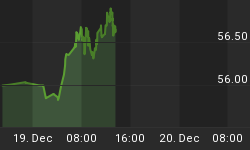Bridgewater, the largest hedge fund in the world, is warning clients that 2019 is looking particularly dangerous, blaming fiscal stimulus that result in a continued tightening of the markets from the Fed.
As reported by Zerohedge, citing a Daily Observation from Bridgewater, CIO Greg Jensen says that “for investors the danger is already here”.
“Markets are already vulnerable, as the Fed is pulling back liquidity and raising rates, making cash scarcer and more attractive—reversing the easy liquidity and 0% cash rate that helped push money out of the risk curve over the course of the expansion,” Jensen explained.
“The danger to assets from the shift in liquidity and the building late-cycle dynamics is compounded by the fact that financial assets are pricing in a Goldilocks scenario of sustained strength, with little chance of either a slump or an overheating as the Fed continues its tightening cycle over the next year and a half.”
And it’s not the first time in recent weeks that the giant hedge fund has hit the emergency button. Related: The Yuan Could Become Africa’s New Trade Currency
Earlier in May, Bridgewater took a net short position on U.S. equities, and said a crucial market driver had hit 10 o’clock. Once it hits 12 o’clock, this major driver of the stock market ends, and we’ll feel the pain because that means liquidity will be super tight.
The hedge fund sees the yield curve for Treasury bonds remaining flat. It also sees oil hitting $62, and the dollar declining 3.5 percent against other currencies.
So should we sit up and listen when the world’s biggest hedge fund sounds the alarm bells?
Coming on the heels of the latest jobs report—maybe we should.
So far, the stock market has been defying a strong jobs report. The June jobs report saw payroll growth at 223,000—the highest since February and far above expectations of 188,000. Unemployment fell to 3.8 percent—or the lowest since 2000. Average hourly earnings jumped 2.7 percent, in line with expectations.
By all accounts, the Fed should be confirming a third rate hike, one that is tentatively planned for this month, and the rising wages could mean a fourth.
Related: What Really Drives Gold Prices?
Bridgewater is troubled by the fact that no one’s pricing in any tightening after 2019, with Zerohedge citing Jensen as saying: “Bond yields are not priced in to rise much, implying that the yield curve will continue to flatten. This seems to imply an unsustainable set of conditions, given that government deficits will continue growing even after the peak of fiscal stimulation and the Fed is scheduled to continue unwinding its balance sheet, it is difficult to imagine attracting sufficient bond buyers with the yield curve continuing to flatten.”
Not everyone agrees, of course.
Deutsche Bank chief international economist Torsten Slok says the yield curve’s flatness is no longer a useful economic signal.
“The U.S. yield curve is not helpful as an indicator of recessions because U.S. rates are moved around not only by U.S. fundamentals but also by many other things, including pension demand and safe-haven demand,” Marketwatch quoted Slok as saying.
By Michael Kern for Safehaven.com
More Top Reads From Safehaven.com:
















